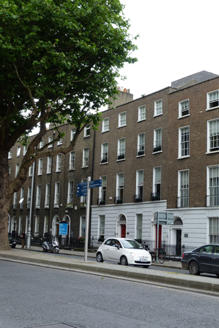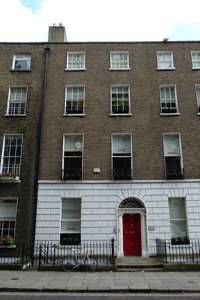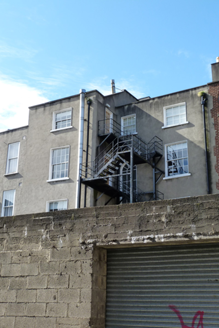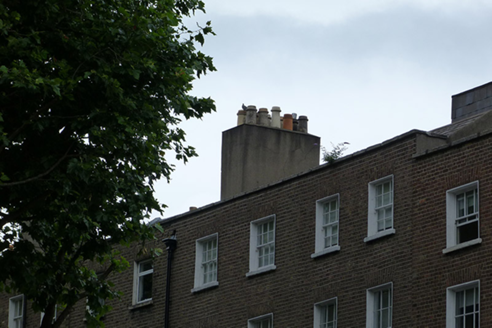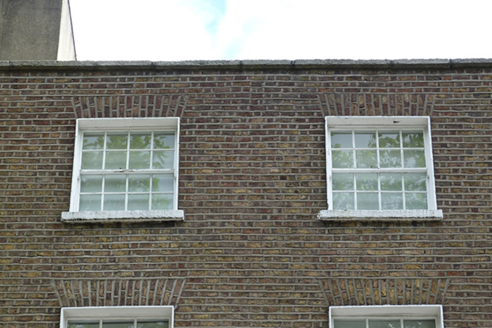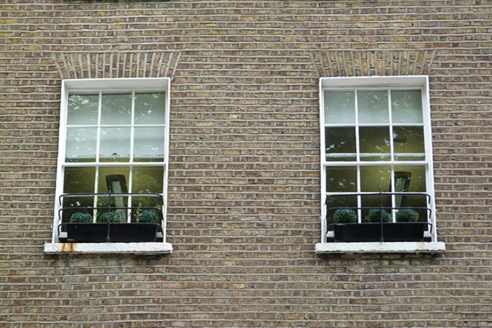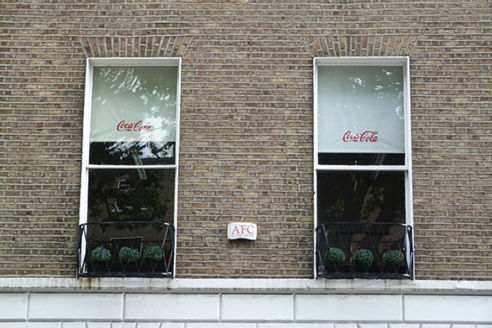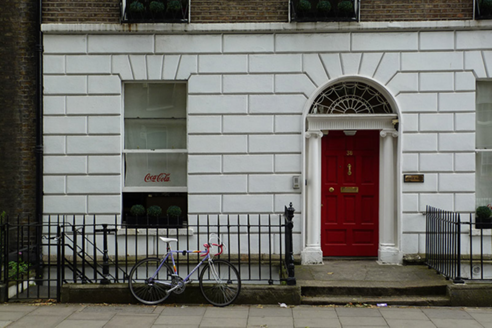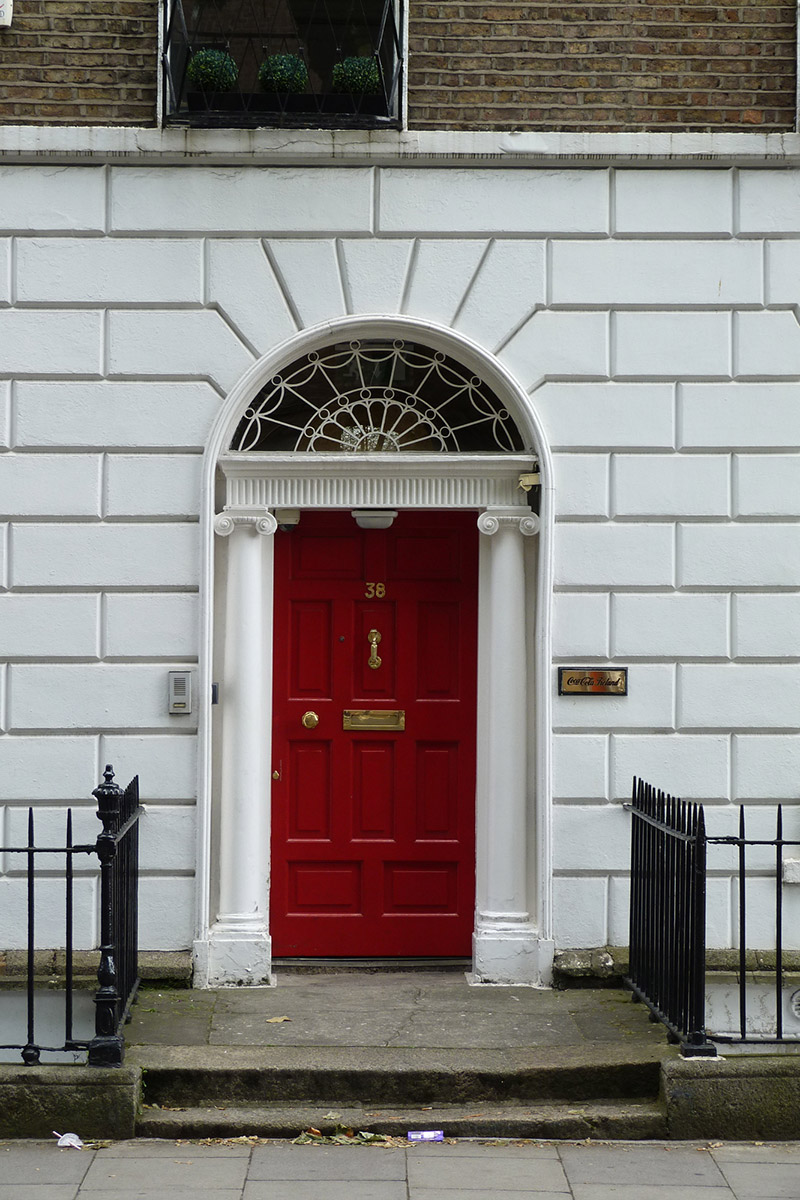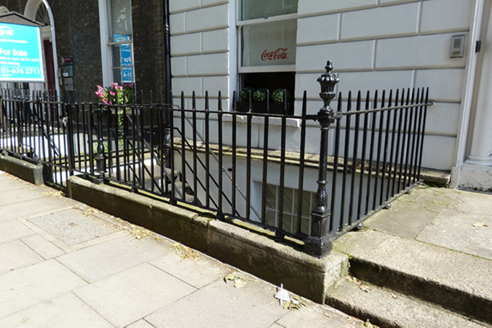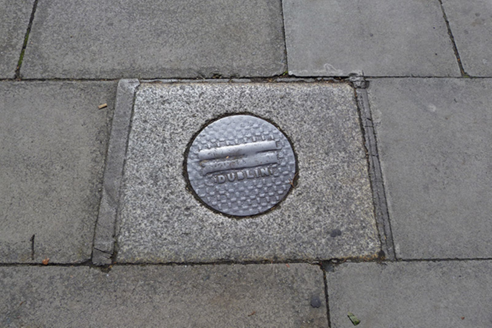Survey Data
Reg No
50100486
Rating
Regional
Categories of Special Interest
Architectural, Artistic
Original Use
House
In Use As
Office
Date
1790 - 1810
Coordinates
316648, 233286
Date Recorded
20/07/2016
Date Updated
--/--/--
Description
Attached two-bay four-storey former house over basement, built c. 1800 as one of terrace of three (Nos. 37-39). Now in use as offices. M-profile pitched slate roof, behind brick parapet with granite coping, with skylights to south slope of rear pitch, and having rendered chimneystacks with clay pots. Cast-iron rainwater goods to west end. Flemish bond brown brick walls over channelled rendered walls to ground floor on granite plinth course over painted rendered walls to basement; rendered to rear elevation. Square-headed window openings, diminishing in height to upper floors, with rendered reveals, painted granite sill course to first floor and painted granite sills elsewhere. Timber sliding sash windows, eight-over-eight pane to basement and top floors, one-over-one pane to ground and first floors and six-over-six pane to second floor; rear elevation has six-over-six pane to top floor and to round-headed stairs windows to first and second floors of east bay and rest of west bay has eight-over-eight pane windows. Wrought-iron balconettes to first and second floors; steel fire escape to rear of east bay. Round-headed door opening with rendered linings, fluted frieze and cornice on engaged Ionic columns, elaborate batwing fanlight and ten-panel timber door with brass furniture. Granite platform with two granite steps, flanked by wrought-iron railings with decorative cast-iron posts on moulded granite plinth enclosing basement area. Cast-iron coal-hole cover set in granite flag to footpath. Rear of plot has carparking, with vehicular entrance to boundary wall to lane.
Appraisal
No. 38 Baggot Street Lower is a well-preserved late Georgian house with well-balanced proportions and graded fenestration pattern typical of the period. It was built, along with the neighbouring No. 39, in a grander style than many of the more modest houses on the street. Mirrored in the neighbouring buildings to each side, the brick façade of this building is ornamented with channelled rendering at ground floor level, adding additional architectural detailing to the group. It is enriched with a Greek Revival doorcase and an elaborate batwing fanlight. Further detail is provided by the window-guards. With its intact setting details, this building makes a strong contribution to the early streetscape character, which has been fairly well retained along this north stretch. The houses maintain a relatively uniform building height and design, with architectural variations attributable to individual developers. An ancient arterial route out of Dublin, Baggot Street was named for Robert Baggot, a local landowner, and it was laid out, with the approval of the Wide Streets Commissioners in 1791, from the west end in the late nineteenth century, but the street was slow to develop due to a recession at the time. The majority of the ground west of Fitzwilliam Street had been leased by 1789; the developer of the houses to the west of this junction was David Courtney.
